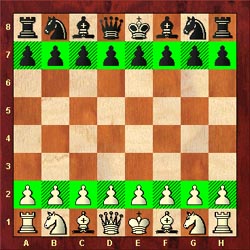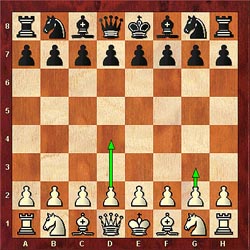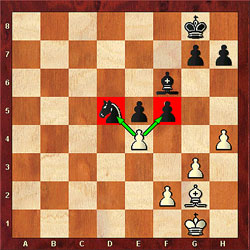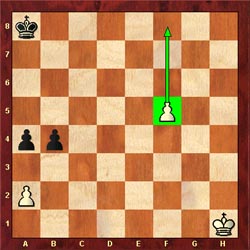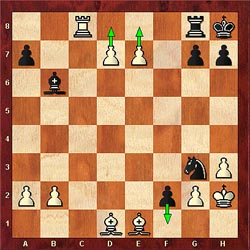|
Up you Mighty Pawn!
If a Pawn survives the fierce conflict and avoids capture he is becomes the most valued piece on the board (besides the King). As seen in Diagram #3, "passed pawn" is one of the most important concepts in chess. It's like a running back headed for a touchdown with no opposing player to stop him from the end zone. Why does this lowly Pawn get so much attention? Here's why.
If a Pawn marches all the way up the board and reaches the enemy's 1st rank, then it is rewarded with the option to become either a Rook, Knight, Bishop, and yes… even a new Queen! In fact, it is even possible (but not probable) for one player to have up to nine Queens on the board at the same time! Almost always, the best choice for promotion is a Queen, but there are rare exceptions. In Diagram #4, if it were black to move, he/she could promote the pawn at f2 to only a Knight and deliver "checkmate!" Ironically, promoting a Pawn to a piece other than a Queen is called "underpromotion."
In my high school days it was common to see a player advance his pawns for several Queens because the opponent would not resign. If your opponent has a lone King, one Queen is sufficient to finish the game quickly.
|
|
